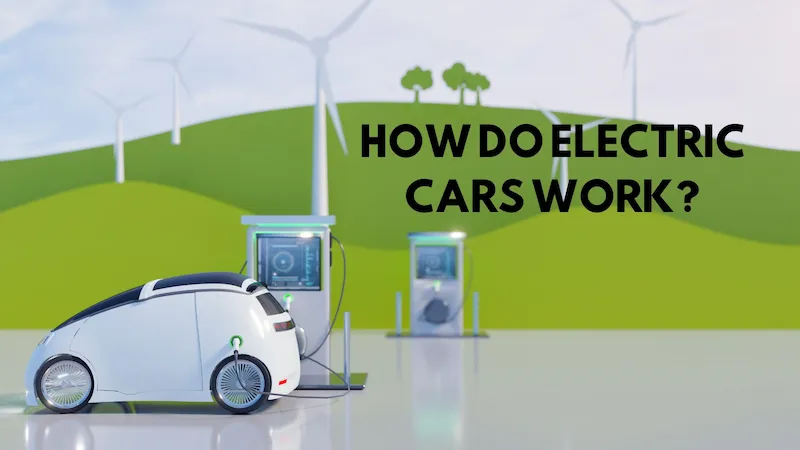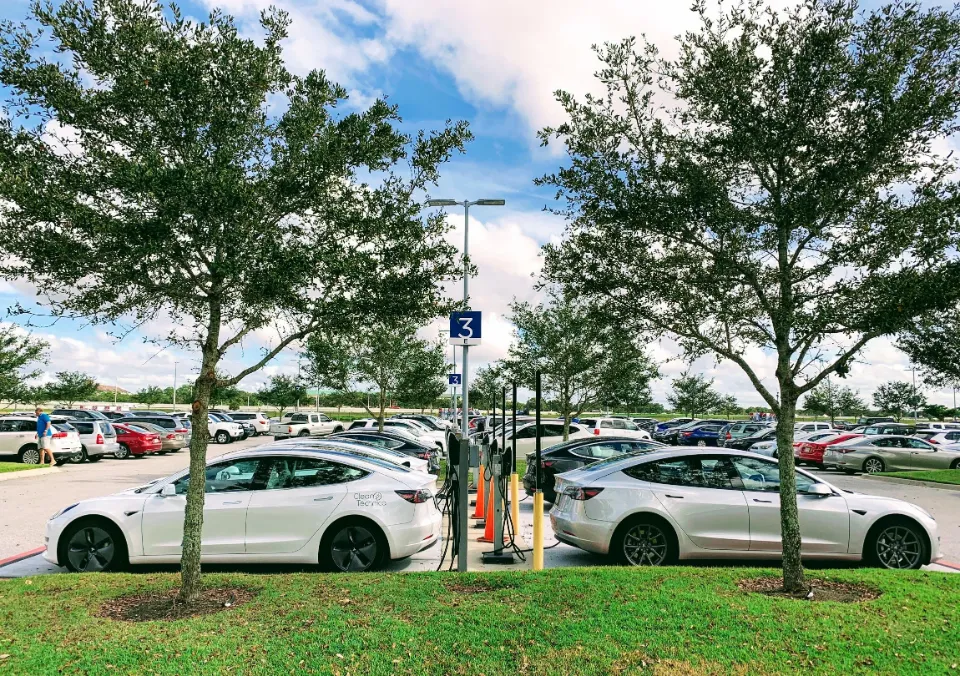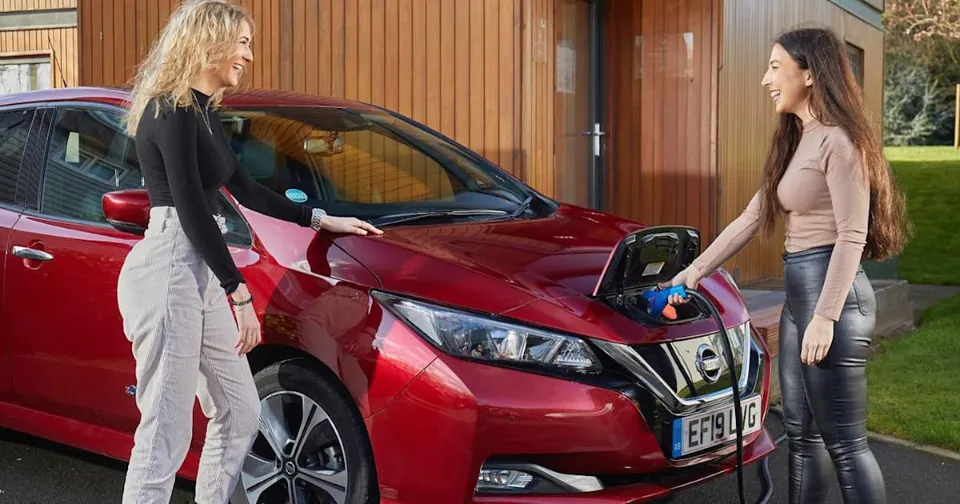Planning to buy electric cars? But, how do electric cars work? The below will give you a specific overview, please read on.
Plugging into a charge point and using the grid’s electricity allows electric cars to run. Rechargeable batteries that are used to power an electric motor that turns the wheels are used to store the electricity. Since electric cars accelerate more quickly than cars with conventional fuel engines, they feel lighter to drive.
The Parts of An Electric Car
It’s critical to comprehend an electric car’s primary components in order to comprehend how it functions.
Traction Battery Pack
The traction battery pack of an electric vehicle functions as a form of energy storage. The motor and all other electrical parts of the vehicle are then powered by this energy, which is present as direct-current electricity. Since lithium-ion batteries have a high energy density, they are typically used in EVs.
Power Inverter
The motor is powered by the alternating current (AC), which is created by the electric car’s inverter from the direct current (DC) from the battery. In order to charge the battery during regenerative braking, the inverter also converts AC current to DC. The power inverter assists in speed control in addition to driving the motor and recharging the battery.
Electric Motor
An electric vehicle moves by using its traction motor, which is powered by electricity from the inverter. Alternating current, which is more dependable than a direct current motor, is typically used in electric traction motors. The vehicle is propelled by a rotation brought on by AC electrons.
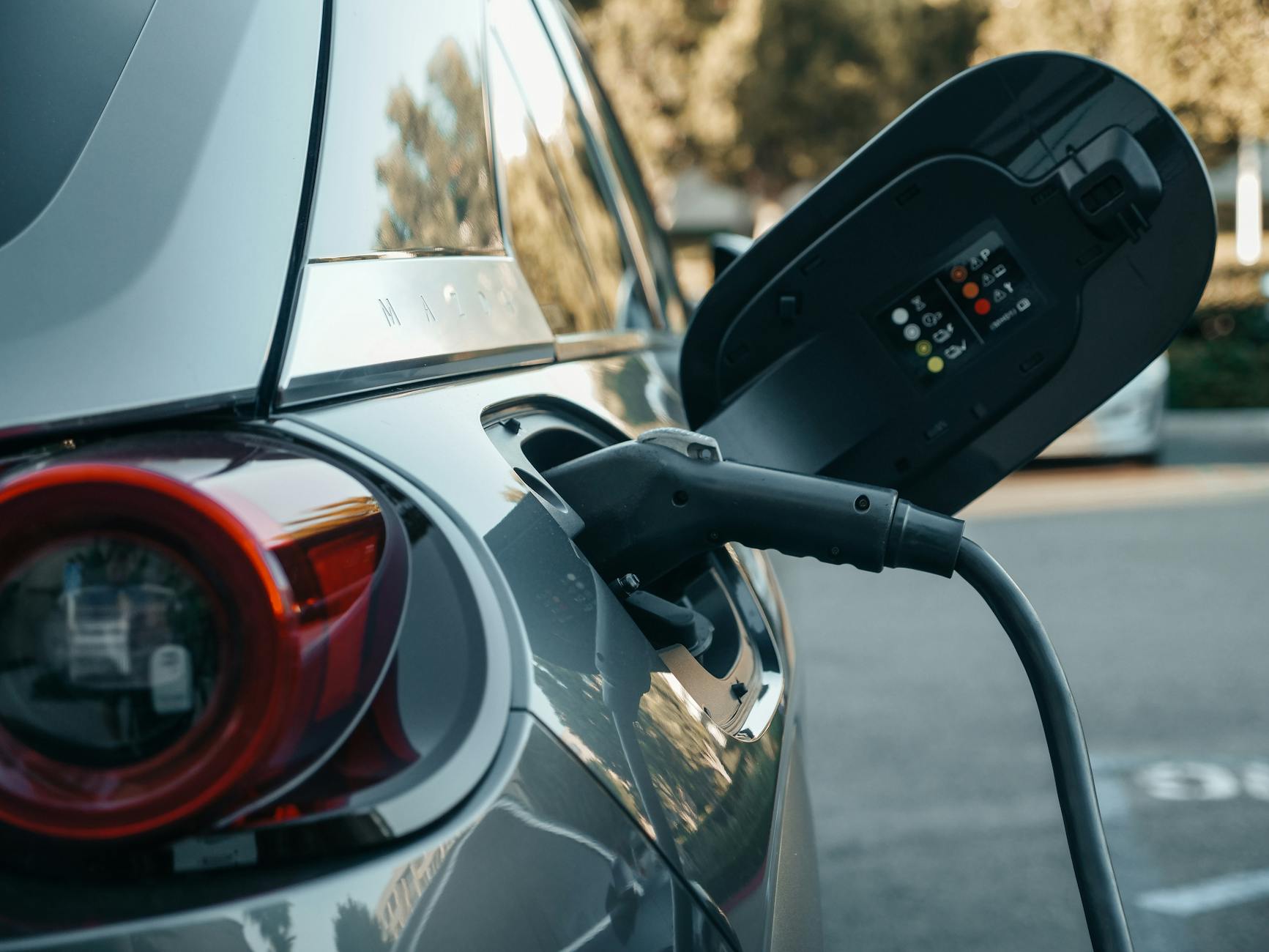
Charge Port
An electric car’s charge port connects to an external power source (or car charger) to charge the battery pack
Transmission
To drive the wheels, the transmission converts electrical traction motor power into mechanical power.
DC/DC Converter
The battery pack’s higher-voltage DC power is transformed by this component into the lower-voltage DC power needed to operate the vehicle’s accessories, such as the headlights and audio system, and to recharge the battery.
Thermal System – Cooling
The battery, electric motor, electronics, and other parts of the vehicle are all kept within the proper operating temperature range by this system.
Read about
Types of Electric Cars
The four major categories of electric vehicles are as follows.
All-Electric Vehicles
Batteries in all-electric vehicles, also referred to as battery electric vehicles (BEVs), are charged by plugging them into a charging station. With a single, all-electric driving mode, they can travel anywhere between 100 and 520 miles. The Nissan LEAF, Chevrolet Bolt, and Tesla Model S are a few all-electric car examples.
Plug-In Hybrid Electric Vehicles
Internal combustion engines and electric motors are both present in plug-in hybrid vehicles, or PHEVs. The best of both worlds are combined in PHEVs, which can run entirely on electricity (or on a charge-depleting mode) or on gasoline. PHEVs can typically go up to 40 miles on electricity alone before switching to gasoline, similar to a conventional hybrid, despite having a smaller electric range than all-electric vehicles. The Hyundai Tucson PHEV and the Mitsubishi Outlander PHEV are two examples of plug-in hybrid vehicles.
Hybrid Electric Vehicles
HEVs, or hybrid electric vehicles, are propelled by an internal combustion engine and at least one electric motor that draws power from a battery. The battery is charged through regenerative braking rather than by plugging in, and the car primarily runs on gasoline. Particularly at low speeds, the electric motor helps to reduce fuel consumption. Among hybrid electric vehicles, the Toyota Prius is one.
Fuel Cell Electric Vehicles
Fuel cell technology is used to power fuel cell electric vehicles, also referred to as FCEVs, which emit no emissions. These cars have tanks filled with hydrogen rather than gasoline and are powered by electricity rather than an EV battery. Electricity produced from the reaction of hydrogen and oxygen powers the vehicle’s motor. The Toyota Mirai is a prime illustration of a fuel cell electric car.
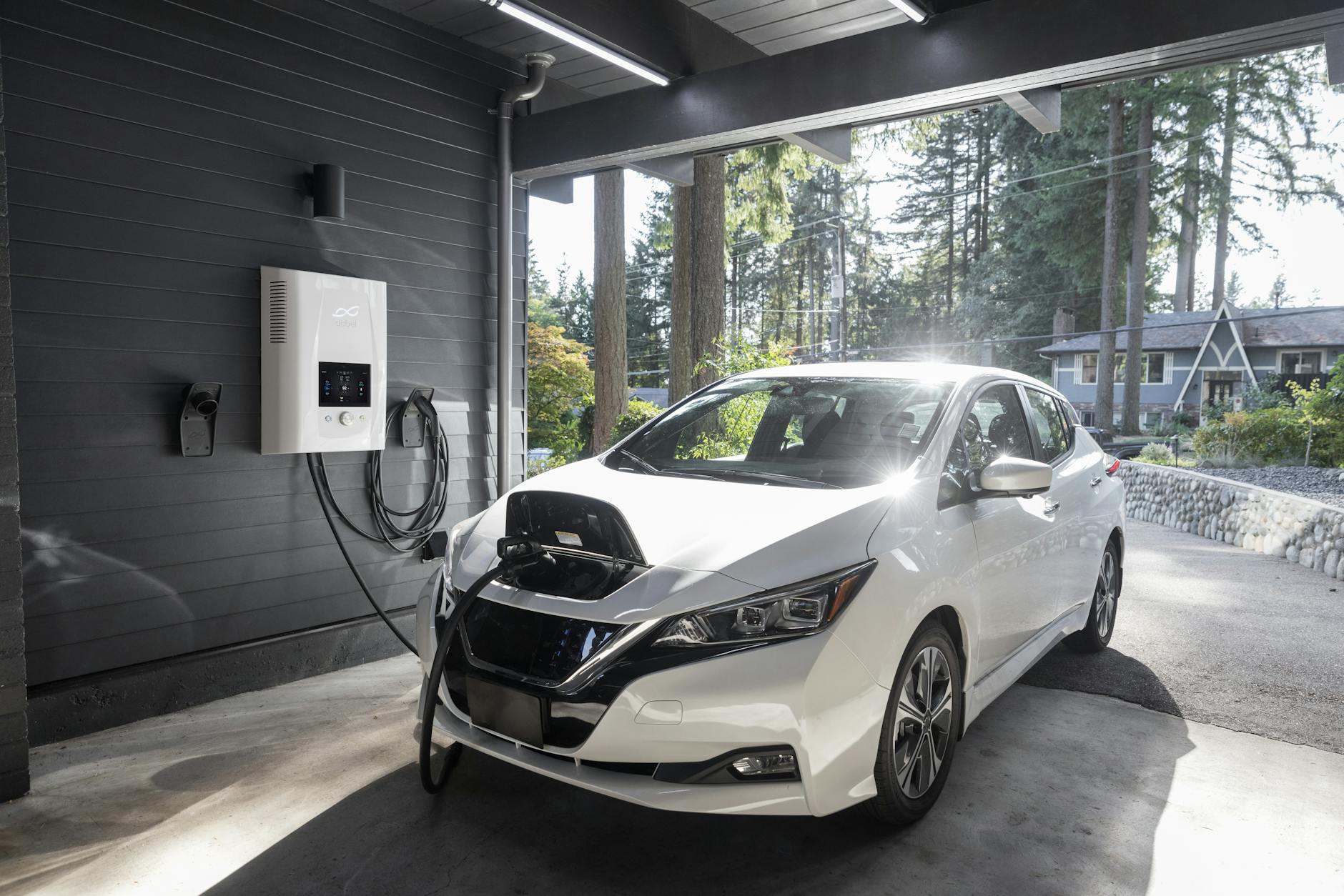
How to Charge An Electric Car?
The three main ways to charge an EV are:
- Level 1 Charging
While Level 1 home charging uses a standard 120-volt outlet and doesn’t require any special equipment, it offers the slowest charging cycle when compared to specialized EVSEs. An EV can travel 2 to 5 miles per hour using this method of charging.
- Level 2 Charging
For Level 2 charging, which uses a 220- or 240-volt outlet, you’ll need specialized equipment at home or access to a public charging station.
It also applies to all BEVs. This EVSE charges plug-in vehicles at a rate of 10 to 25 miles of range per hour, which is much faster than a Level 1 charger and works with all plug-in cars.
- DC Fast Charging
To charge an EV’s battery pack more quickly than with Level 1 and Level 2 chargers, this specialized EVSE transforms AC electricity inside the charging station into DC electricity. Only some plug-in vehicles can use these fast-charging stations, which can take anywhere between 15 and 45 minutes to fully charge a traction battery pack.
How Long Does It Take to Charge An Electric Car?
There are also three EV charging speeds:
- Slow – typically rated up to 3kW. Frequently used for charging at work or overnight. 8 to 10 hours for charging.
- Fast – typically rated at either 7Kw or 22kW. Car parks, supermarkets, recreation areas, and homes with off-street parking frequently have them installed. 3 to 4 hours for charging.
- Rapid – typically rated from 43 kW. only suitable for EVs with fast charging capabilities. 30 to 60 minutes for charging.
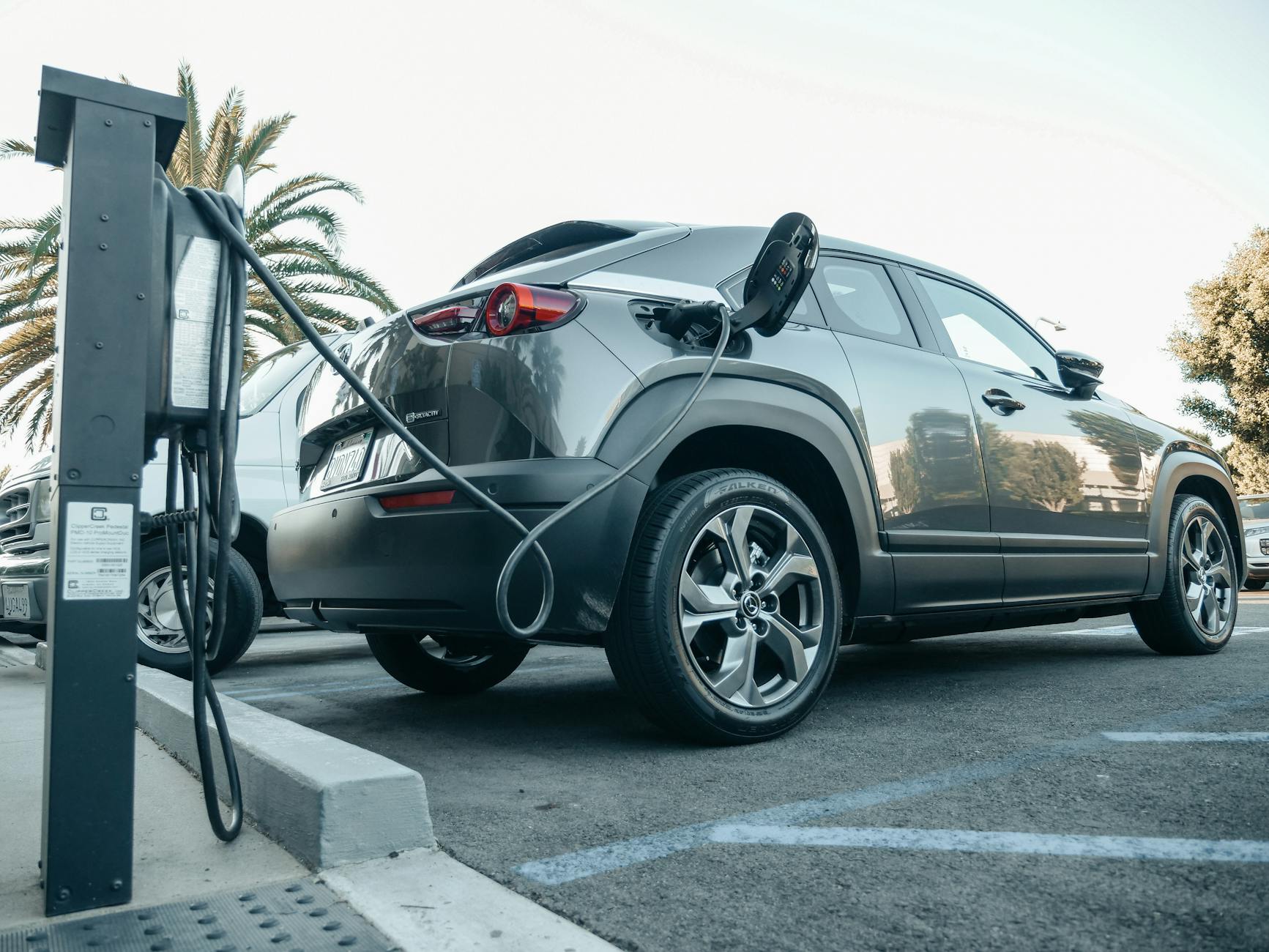
Last, How Do Electric Cars Work?
Here is a basic explanation of how electric vehicles (EVs) operate: EVs take energy from a charging station and store it in their battery. In order to move the wheels, the motor is powered by the battery. This motion is made possible by the background cooperation of numerous electrical components.
Thank you for reading.

